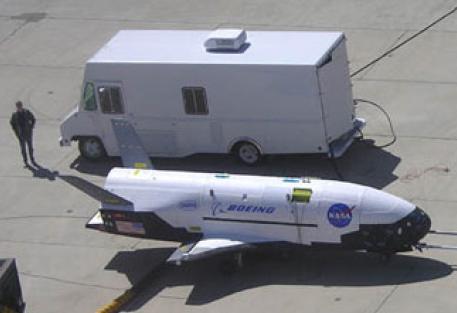ISRO General News and Updates
- Thread starter rahulrds1
- Start date
More options
Who Replied?sorcerer
New Member
- Joined
- Apr 13, 2013
- Messages
- 26,919
- Likes
- 98,474
ISRO Is Offering A Certificate Course That You Can Complete In Just 24 Hours! All Details Here

 www.indiatimes.com
www.indiatimes.com

ISRO Is Offering A Certificate Course That You Can Complete In Just 24 Hours! All Details Here
The official notification states that the course is free, flexible and available to everyone who wish to enhance their capabilities related to the ‘use of geospatial and Earth observation technologies in disaster risk management’.
Dessert Storm
New Member
- Joined
- Sep 8, 2020
- Messages
- 1,675
- Likes
- 5,868
Karthi
New Member
- Joined
- Jul 15, 2018
- Messages
- 2,214
- Likes
- 17,755
^ Nice. Is this in use in an existing satellite, or under development?
Under development I think
Karthi
New Member
- Joined
- Jul 15, 2018
- Messages
- 2,214
- Likes
- 17,755
Indian Students ‘Indian SAT’ to be launched in orbit by NASA in June 2021
Three students from Tamil Nadu, India has developed the world’s smallest and lightest Technology Demonstrator Satellite (TDS).
The three Final-year BSc Physics students, M Adnaan of Thanthonimalai and V Arun of Thennilai, along with their friend M Kesavan of Malaikovilur, an Electronics and Communication Engineering student pursuing in Coimbatore, came up with the micro satellite.
Adnaan, Design and Technology Engineer of IND SAT said, “NASA conducts an annual competition called Cubes In Space (CIS), where entries are received from across the globe. More than 25,000 projects from 73 countries entered the competition. Among them, only 88 were selected and our ‘Indian SAT’ was the only satellite in the competition which was selected by NASA for launching into the orbit on their Sounding Rocket 7 (SR 7) in June 2021.
This is indeed a very proud moment for us.” Arun, Indian SAT’s Hardware & Software Designer, said, “Our Technology Demonstrator Satellite is made of reinforced graphene polymer.The satellite which is 3 cm in size weighs only 64 gms. It is fitted with 13 sensors that can calculate more than 20 parameters. The satellite has its own RF (Radio Frequency) communication to transmit and receive signals from outer space to Earth and is powered by solar cells.”
Kesavan, Testing Engineer of Indian Sat, said, “Adnaan and I started this project when we were studying in school together.Our previous attempts failed and we later got guidance from Space Kidz India Organization.” About the financial assistance, they said The Karur Government Arts College was the chief sponsor and Shiva Educational Trust was the co-sponsor for the project. Apart from this, Aravakurichi MLA Senthil Balaji has donated Rs 1 lakh and DMK president MK Stalin handed over a sum of Rs 2 lakh to motivate them towards the achievement.
Karthi
New Member
- Joined
- Jul 15, 2018
- Messages
- 2,214
- Likes
- 17,755
Mars losing its atmosphere to outer space at faster rate than Earth, reveals Isro’s MOM study.
Mars is losing its atmosphere to outer space at a faster rate, a study of data and images sent by Isro’s Mars Orbiter Mission (MOM) and Nasa’s Mars orbiter Mars Atmosphere and Volatile Evolution (Maven) has found. According to a report in The Times of India, Mars, being relatively smaller planet compared to Earth, is losing its atmosphere at a faster rate.
Why is Mars losing its atmosphere?
Though other terrestrial planets in the solar system are also constantly losing their atmospheres to outer space, the rate at which this loss happens is determined mainly by the size of a planet and temperature of its upper atmosphere, the report said as quoted by TOI. Indian Space Research Organisation (Isro) on Wednesday posted on its website these findings of scientists who had studied data and images sent by MOM and Maven about a global dust storm that enveloped the Red planet in June-July 2018. Such a global storm is one of the dynamical meteorological phenomena on Mars.
Isro study on dust storms on Mars
An Isro statement said, as quoted by TOI, “In the first week of June 2018, a global dust storm, also called a “planet-encircling dust event”, started growing on Mars and it had grown to its mature phase by the first week of July. Such a storm significantly heated and expanded the Martian upper atmosphere. The heating and expansion of the global dust storm led to a part of Mars atmosphere quickly reaching the exobase altitude (which lies at 220 km). Any hot gases above the exobase altitude are more likely to move to further higher altitudes and subsequently escape to outer space. Hence, from the results of the present study it can be inferred that the 2018 global dust storm resulted in enhanced escape of the Martian atmosphere.” MOM observed the evening side of Mars by diving down to altitude as low as 155 km. The Mars Exospheric Neutral Composition Analyser (MENCA) instrument, a mass spectrometer onboard the Isro orbiter, measured the neutral densities of the Mars’ thermosphere (which lies between 100 and 200 km). By analysing these measurements, scientists at the National Atmospheric Research Laboratory, Gadanki, Andhra Pradesh, found that Mars upper atmosphere was undergoing warming and expansion. As the dust storm slowly engulfed Mars over a month period, scientists found that the neutral densities in the Mars thermosphere increased significantly. Such an increase was also confirmed by Nasa’s Maven mission, which was simultaneously measuring the Martian thermosphere on the morning side, the statement said. as quoted by TOI.
Isro’s MOM
Isro had launched MOM on November 5, 2013. On September 24, 2014, the Rs 450-crore MOM was placed in the Martian orbit. Though the Mangalyaan mission was initially meant to last six months, it is still alive and sending images from time to time nearly seven years after its launch and since then has made several key findings about the Red planet.
So, when is Elon Musk going to bomb Mars.View attachment 64153
Mars losing its atmosphere to outer space at faster rate than Earth, reveals Isro’s MOM study.
Mars is losing its atmosphere to outer space at a faster rate, a study of data and images sent by Isro’s Mars Orbiter Mission (MOM) and Nasa’s Mars orbiter Mars Atmosphere and Volatile Evolution (Maven) has found. According to a report in The Times of India, Mars, being relatively smaller planet compared to Earth, is losing its atmosphere at a faster rate.
Why is Mars losing its atmosphere?
Though other terrestrial planets in the solar system are also constantly losing their atmospheres to outer space, the rate at which this loss happens is determined mainly by the size of a planet and temperature of its upper atmosphere, the report said as quoted by TOI. Indian Space Research Organisation (Isro) on Wednesday posted on its website these findings of scientists who had studied data and images sent by MOM and Maven about a global dust storm that enveloped the Red planet in June-July 2018. Such a global storm is one of the dynamical meteorological phenomena on Mars.
Isro study on dust storms on Mars
An Isro statement said, as quoted by TOI, “In the first week of June 2018, a global dust storm, also called a “planet-encircling dust event”, started growing on Mars and it had grown to its mature phase by the first week of July. Such a storm significantly heated and expanded the Martian upper atmosphere. The heating and expansion of the global dust storm led to a part of Mars atmosphere quickly reaching the exobase altitude (which lies at 220 km). Any hot gases above the exobase altitude are more likely to move to further higher altitudes and subsequently escape to outer space. Hence, from the results of the present study it can be inferred that the 2018 global dust storm resulted in enhanced escape of the Martian atmosphere.” MOM observed the evening side of Mars by diving down to altitude as low as 155 km. The Mars Exospheric Neutral Composition Analyser (MENCA) instrument, a mass spectrometer onboard the Isro orbiter, measured the neutral densities of the Mars’ thermosphere (which lies between 100 and 200 km). By analysing these measurements, scientists at the National Atmospheric Research Laboratory, Gadanki, Andhra Pradesh, found that Mars upper atmosphere was undergoing warming and expansion. As the dust storm slowly engulfed Mars over a month period, scientists found that the neutral densities in the Mars thermosphere increased significantly. Such an increase was also confirmed by Nasa’s Maven mission, which was simultaneously measuring the Martian thermosphere on the morning side, the statement said. as quoted by TOI.
Isro’s MOM
Isro had launched MOM on November 5, 2013. On September 24, 2014, the Rs 450-crore MOM was placed in the Martian orbit. Though the Mangalyaan mission was initially meant to last six months, it is still alive and sending images from time to time nearly seven years after its launch and since then has made several key findings about the Red planet.
Dessert Storm
New Member
- Joined
- Sep 8, 2020
- Messages
- 1,675
- Likes
- 5,868
ISRO-NASA Satellite NISAR Scheduled To Be Launched By 2022
Read more at: https://www.bloombergquint.com/politics/isro-nasa-satellite-nisar-scheduled-to-be-launched-by-2022
Copyright © BloombergQuint
Read more at: https://www.bloombergquint.com/politics/isro-nasa-satellite-nisar-scheduled-to-be-launched-by-2022
Copyright © BloombergQuint
mokoman
New Member
- Joined
- May 31, 2020
- Messages
- 6,484
- Likes
- 34,873
Maybe its designed for military applications in mind ,India's Own 'Space Shuttle': ISRO Likely To Test Ground Landing Of Its Reusable Launch Vehicle By End Of This Year
byIANS-Oct 7, 2020 10:53 AM
ISRO RLV-TD (Pic Via Wikipedia)
The Indian space agency is likely to test its reusable launch vehicle's (RLV) landing on the ground sometime in November or December 2020, said a senior official.
The Indian Space Research Organisation (ISRO) is targeting to build RLV similar to USA's space shuttle to put into orbit satellites and come back to land for the next mission. This in turn would bring down the satellite launch costs.
The two Indian rockets in service - Polar Satellite Launch Vehicle (PSLV) and Geosynchronous Satellite Launch Vehicle (GSLV) - and also the upcoming Small Satellite Launch Vehicle (SSLV) - are expendable ones.
"We are planning to test the Reusable Launch Vehicle's landing in Chitradurga District in Karnataka. We want to do the test in November/December this year," S Somanath, Director, Vikram Sarabhai Space Centre (VSSC) -- part of ISRO -- told IANS.
As per plans, the RLV will be lifted up by a helicopter and from the height of four km it will be released.
Post release by the helicopter, the RLV will glide and navigate towards the runway and land on its own in an airfield in Chitradurga District deploying its parachute, Somanath said.
According to ISRO, RLV Interface System (RIS) for interfacing with helicopter and Qualification Model of landing gear have been realised.
Simply put, RLV will ascend to orbit, stay there, re-enter and land on a runway like an aircraft. The technology has the challenges of meeting the complexities of both -- a rocket and an aircraft.
According to Somanath, about 30-40 ISRO officials have to be taken to Chitradurga and stay there for about two weeks.
In 2016, ISRO successfully tested RLV's descent from an altitude of 65 km, its atmospheric re-entry at around Mach 5 (five times the speed of sound).
According to ISRO, the vehicle's navigation, guidance and control system accurately steered the vehicle during this phase for safe descent.
After successfully surviving high temperatures of re-entry with the help of its Thermal Protection System (TPS), the vehicle successfully glided down to the defined landing spot over Bay of Bengal, at a distance of about 450km from Sriharikota in Andhra Pradesh.
Total flight duration from launch to landing of this mission lasted for about 770 seconds.
Source : https://swarajyamag.com/insta/india...s-reusable-launch-vehicle-by-end-of-this-year
---------------------------------------------------------
Personally, I am more interested into VTVL capability like SpaceX, would be amazing to see it come to fruition.
Here's the link to video of the old RLV Test :
like the secret US project X-37B

The chinese also tested similar vehicle last month
DRDO AvatarMaybe its designed for military applications in mind ,
like the secret US project X-37B

The chinese also tested similar vehicle last month
chewi
New Member
- Joined
- Feb 10, 2020
- Messages
- 17
- Likes
- 47
PSLV-C49/EOS-01 - ISRO
PSLV successfully launches EOS-01 and nine customer satellite from Sriharikota
 www.isro.gov.in
www.isro.gov.in
India’s Polar Satellite Launch Vehicle in its 51st mission (PSLV-C49), will launch EOS-01 as primary satellite along with nine international customer satellites from Satish Dhawan Space Centre (SDSC) SHAR, Sriharikota. The launch is tentatively scheduled at 1502 Hrs IST on November 07, 2020, subject to weather conditions.
EOS-01 is an earth observation satellite intended for applications in agriculture, forestry and disaster management support.
The customer satellites are being launched under commercial agreement with NewSpace India Limited (NSIL), Department of Space.
chewi
New Member
- Joined
- Feb 10, 2020
- Messages
- 17
- Likes
- 47
Arihant Roy
New Member
- Joined
- Jan 25, 2018
- Messages
- 1,515
- Likes
- 12,744
Fellas , ISRO is back after a long hiatus. This will be the 51st mission of our venerable workhorse PSLV . Will be doing lungi dance after the successful launch and placement of the upcoming C50 mission .

Arihant Roy
New Member
- Joined
- Jan 25, 2018
- Messages
- 1,515
- Likes
- 12,744
Thanks sir. I was also wondering where did RISAT-2BR2 go?
Arihant Roy
New Member
- Joined
- Jan 25, 2018
- Messages
- 1,515
- Likes
- 12,744
Last edited:
Arihant Roy
New Member
- Joined
- Jan 25, 2018
- Messages
- 1,515
- Likes
- 12,744
Articles
-
India Strikes Back: Operation Snow Leopard - Part 1
- mist_consecutive
- Replies: 9
-
Aftermath Galwan : Who holds the fort ?
- mist_consecutive
- Replies: 33
-
The Terrible Cost of Presidential Racism(Nixon & Kissinger towards India).
- ezsasa
- Replies: 40
-
Modern BVR Air Combat - Part 2
- mist_consecutive
- Replies: 22
-
Civil & Military Bureaucracy and related discussions
- daya
- Replies: 32

